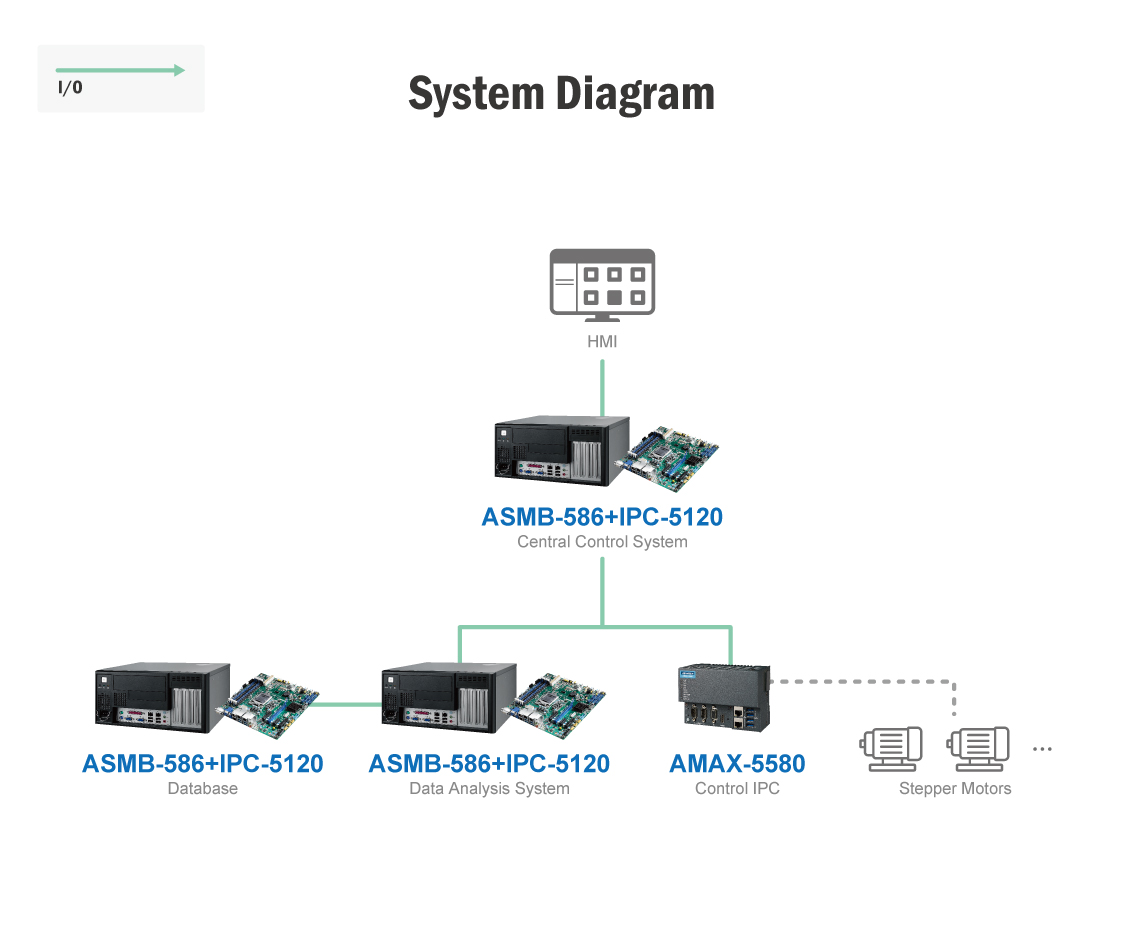Advantech Industrial Solutions Ease Upgrades
Background Information
Semiconductors are widely used in the production of personal computers, wireless communication solutions, and consumer/industrial electronics. Correspondingly, sharply increasing demand for electronics has resulted in the expansion and evolution of semiconductor production capacity. Cutting-edge technology has been introduced throughout the evolution of semiconductor fabrication in an effort to augment the process. Accordingly, empowering future equipment updates, control systems, and human-machine interfaces necessitates next generation semiconductor equipment with innovative, high-performance CPUs, and expandable, diverse specification sockets.
Project Requirements
Maintaining yield quality while applying the latest technology is critical to remaining competitive in the semiconductor/integrated-circuit manufacturing sector. Indeed, hastening the transition from fabrication R&D to production necessitates strict management methodologies that further improve yield quality. Technology transfer and modularized manufacturing concepts, such as “Copy Exactly” are applied to integrated device manufacturers (IDE) and IC foundry manufacturing to enable the fabrication of various products. Apart from a limited number of important machines, R&D teams usually share most machines with production lines to conserve resources. Likewise, when switching equipment for different purposes, minimizing the service downtime caused by system upgrades and maintenance is vital. Rigorous “Copy Exactly” standards in the semiconductor industry push equipment suppliers to support the same quality of existing production specification for 5 ~ 10 years. In addition, semiconductor fabrication plants are required to operate 24/7 without pause. Accordingly, machines in these plants must maintain high-utilization/low-failure rates while accommodating specific operating environments. Maintaining compatibility between Fieldbus for programmable logic controllers (PLC) and preexisting client equipment pushes suppliers to provide PCI slots and PS/2 ports that lengthen equipment lifespan.
Project Description & Project Implementation
Our customers’ semiconductor equipment required a control system and human-machine Interface (HMI) upgrade. This project applied Advantech’s IPC-5120 rackmount chassis and ASMB-586 server board to achieve this end. The project’s equipment used three systems — a data analytic system; a database; and a central control system that enabled coordination between the data analytic systems, HMI, and control PCs.
IPC-5120 and ASMB-586 use Intel® Xeon® E and 8th/9th Gen Core™ solutions that deliver excellent performance. This performance enables users to augment software performance and operation efficiency using their control PC. These solutions support PCI expansion slots that enable users to continue using old equipment. This, in turn, helps avoid adoption of costly new equipment and software upgrades. Advantech’s IPC-5120 and ASMB-586 provides front I/O interfaces that ease serial equipment maintenance.
Our excellent lifecycle management and revision control leads many semiconductor customers to choose Advantech industrial severs. Indeed, semiconductor equipment manufacturers adopting “Copy Exactly” models seek solutions that minimize drastic equipment changes and deliver expanded service life.
Advantech accommodates strict revision management on products and key components. We provide a 5-year warranty and ensure a 7-year product supply. In sum, Advantech’s reliable product service ensures customer equipment longevity.
System Diagram

Why Advantech
- Advantech systems can endure the wide operating temperatures found harsh-usage factory environments. Advantech’s IPC 5120 and ASMB-586 support temperatures between 0 ~ 40 °C (32 ~ 104 °F) and 0 ~ 60 °C (32 ~ 140 °F) respectively
- The IPC-5120 chassis provides a front I/O interface with 4 x expansion slots, enabling customers to flexibly integrate equipment
- ASMB-586 supports both PCIe and PCI interfaces
- Advantech servers adhere to strict product life cycle management and revision control. They provide 5-years’ warranty and 7-years of product supply that reduces equipment building costs accrued by maintenance and upgrade
